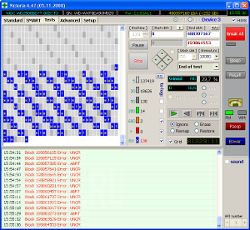Victoria 447 Iso Obraz

This is a file from the Wikimedia Commons.Information from its description page there is shown below. Commons is a freely licensed media file repository. You can help. V., 2001, Isodimorphism of templates in zeolites. Supergroup rocks, Carapace Nunatak, Allan Hills, and Coombs Hills, Victoria Land, Antarctica,.
Algebra 9 klass shinibekov 2013. • • • • • • • • • Full name Alexandrina Victoria Father Mother Religion Signature Victoria (Alexandrina Victoria; 24 May 1819 – 22 January 1901) was from 20 June 1837 until her death. On 1 May 1876, she adopted the additional title of. Victoria was the daughter of, the fourth son of. Both the Duke and the King died in 1820, and Victoria was raised under close supervision by her mother,. She inherited the throne at the age of 18, after her father's three elder brothers had all died, leaving no surviving legitimate children. The United Kingdom was already an established, in which the sovereign held relatively little direct political power.
Privately, Victoria attempted to influence government policy and ministerial appointments; publicly, she became a national icon who was identified with strict standards of. Victoria married her first cousin in 1840.
Their married into royal and noble families across the continent, tying them together and earning her the 'the grandmother of Europe'. After Albert's death in 1861, Victoria plunged into deep mourning and avoided public appearances. As a result of her seclusion, temporarily gained strength, but in the latter half of her reign, her popularity recovered. Her and Diamond Jubilees were times of public celebration. Her reign of 63 years and seven months was and is known as the. It was a period of industrial, cultural, political, scientific, and military change within the United Kingdom, and was marked by a great expansion of the. She was the last of the.
Her son and successor,, initiated the, the line of his father. Portrait of Victoria aged four by, 1823 Victoria's father was, the fourth son of the reigning King of the United Kingdom,. Until 1817, Edward's niece,, was the only legitimate grandchild of George III. Her death in 1817 precipitated a succession crisis that brought pressure on the Duke of Kent and his unmarried brothers to marry and have children.
In 1818 he married, a widowed German princess with two children— (1804–1856) and (1807–1872)—by her first marriage to the. Her brother was Princess Charlotte's widower. The Duke and Duchess of Kent's only child, Victoria, was born at 4.15 a.m. On 24 May 1819 at in London. Victoria was christened privately by the,, on 24 June 1819 in the Cupola Room at Kensington Palace.
She was baptised Alexandrina after one of her godparents, Emperor, and Victoria, after her mother. Additional names proposed by her parents—Georgina (or Georgiana), Charlotte, and Augusta—were dropped on the instructions of Kent's eldest brother,. At birth, Victoria was fifth in the line of succession after the four eldest sons of George III: George, the Prince Regent (later George IV);; (later William IV); and Victoria's father, Edward, the Duke of Kent. The Prince Regent had no surviving children, and the Duke of York had no children; further, both were estranged from their wives, who were both past child-bearing age, so the two eldest brothers were unlikely to have any further children. The Duke of Clarence and the Duke of Kent married on the same day in 1818, but both of Clarence's legitimate daughters (born in 1819 and 1820) died as infants. Victoria's father died in January 1820, when Victoria was less than a year old.